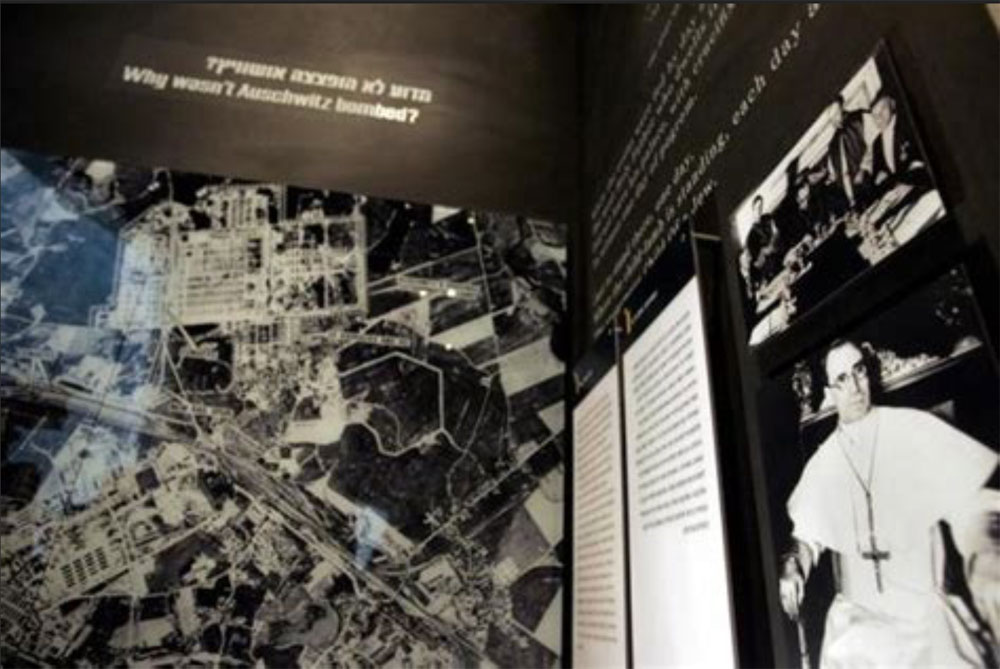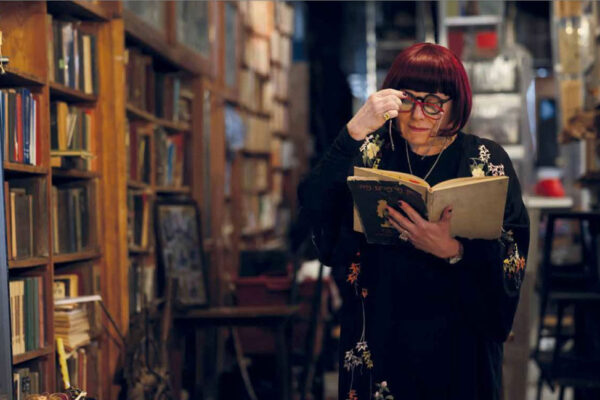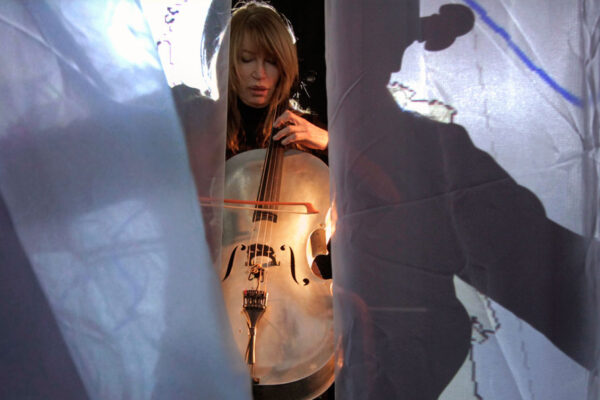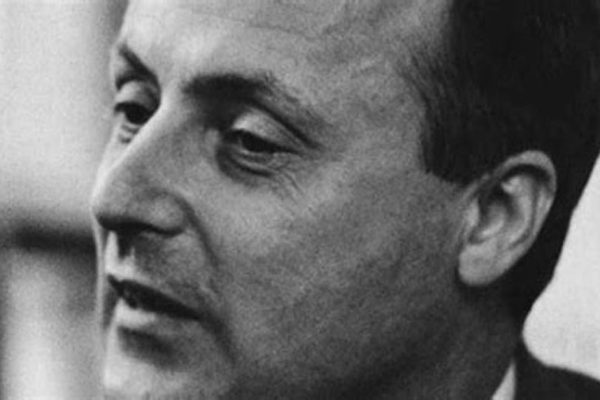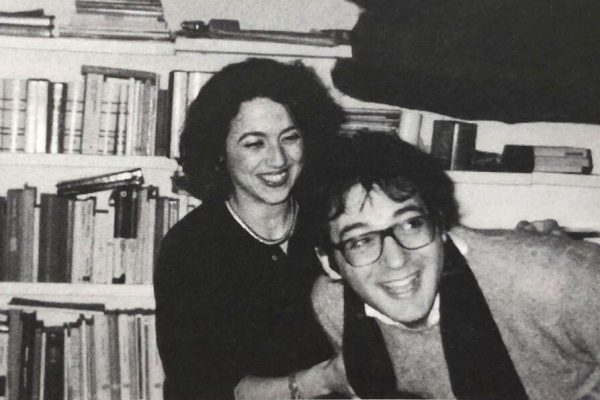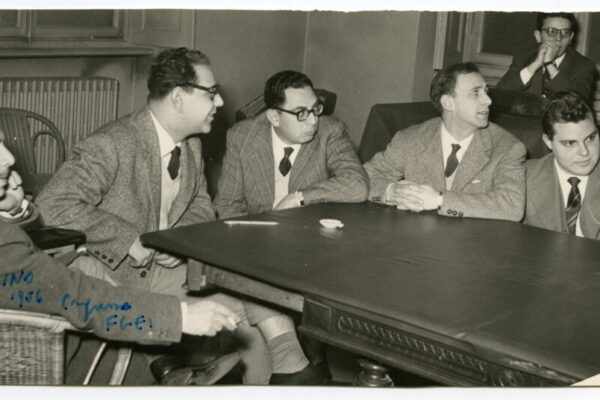The Church and the Righteous. Susan Zuccotti in conversation with Alessandro Cassin
Cardinal Elia Dalla Costa, archbishop of Florence during World War II, has recently been named Righteous Among the Nations by Yad Vashem. Dalla Costa’s courageous and effective actions in favor of Jews in and around Florence must be seen in context, as part of a rescue operation set up and financed by the Italian Jewish relief and resistance group, Delasem (Delegation for the Assistance of Jewish Emigrants). Established in 1939, after the Fascist regime shut down the Committee for the Relief of German Jewish Emigrants, Delasem’s scope, strategies and effectiveness were unparalleled. While the full story of Delasem remains to be written, it is estimated that between 1939 and 1947, Delasem distributed more than 150 millions liras of the time in aid and assisted over 9,000 foreign and Italian Jews, arranging for 6,000 of them to leave Italy and reach safety in neutral countries. After the Italian armistice with the Allies on September 8, 1943, Delasem, realizing the incipient dangers of a Nazi invasion, was forced underground. The organization quickly contacted a number of bishops and asked for assistance with its operations at the hour of greatest danger for the Jews.
In the following conversation Susan Zuccotti, whose award-winning book, Under His Very Windows- The Vatican and the Holocaust in Italy (2000), was the first systematic examination in English of the role of the Vatican during the anti-Jewish persecution in Italy, analyzes the context of Archbishop Dalla Costa’s actions. Zuccotti’s latest book, Père Marie-Benoît and Jewish Rescue: How a French Priest Together with Jewish Friends Saved Thousands during the Holocaust, will be published by Indiana University Press in the spring of 2013.
Alessandro Cassin: When and how did you develop an interest in the role of the Vatican in the Holocaust? Your Under His Very Windows was published in 2000, but when did the subject first come under historical scrutiny?
Susan Zuccotti: My interest in the Vatican’s role arose during my research on the Holocaust in France and in Italy, two countries where sectors of the Church had an active role in the resistance. By 1995 I decided the subject deserved a specific study. Up to that point, the subject had not been studied much in English, or at least not on its own. There were a few excellent works, including Saul Friedländer’s Pius XII and the Third Reich (1966), translated from German, and John Morley’s Vatican Diplomacy and the Jews during the Holocaust: 1939-1943 (1980), but they were few and far between. My book was published in 2000. Around that time, all of a sudden, there were four other books on the subject; we had all been working independently and without consulting. Those books were James Carroll’s Constantine’s Sword – The Church and the Jews, John Cornwell’s Hitler’s Pope, Michael Phayer’s The Catholic Church and the Holocaust: 1930-1965, and, two years later, Daniel Goldhagen’s A Moral Reckoning: The Role of the Catholic Church in the Holocaust and Its Unfulfilled Duty of Repair.
One of the reasons I stopped teaching and decided to work on this exclusively was because it was a time-sensitive topic. I had become aware of the growing interest in the subject, which had not been there before. Because my book, focusing exclusively on Italy, was so specific, I worried that there would not be a lot of room for other studies on the same topic, at least not in English. I wanted to publish it in a timely fashion.
AC: Did you consult with Italian scholars for that book?
SZ: Absolutely. I worked particularly with Giovanni Miccoli, who was very helpful and indicated that the subject was of great interest in other countries as well. In the US, scholars at the Holocaust Museum in Washington were beginning to ask many questions on the subject of Jewish – Christian relations. The question of the Vatican’s role had come strongly to the forefront by the year 2000.
Going back to your question as to why this had not been examined by historians earlier, I think John Connelly’s new book, From Enemy to Brother: The Revolution in Catholic Teaching on the Jews, 1933-1965, provides some insight. He points out that there had been no discussion- virtually no public discussion – and very little understanding of what the Holocaust had been, until the early 1960’s. Many of the first works on the Holocaust were technical studies such as Raul Hilberg’s, examining how the persecution and extermination occurred from a political point of view. How and why the subject of the Vatican’s role in the Holocaust came to public attention is a subject in itself, but I am convinced that some explanation can be found in John Connelly’s recent work.
AC: Last week Yad Vashem awarded the title of Righteous Among the Nations to Cardinal Archbishop Elia Dalla Costa. From all accounts, including your own research, the actions in favor of the Jews taken by the archbishop of Florence were planned and carried out as teamwork. That is, the archbishop acted through his secretary Monsignor Giacomo Meneghello, the Dominican priest Father Cipriano Ricotti, and don Leto Casini, in collaboration with Delasem. Could you comment or speculate on the reasons for Yad Vashem’s recognizing Dalla Costa now?
SZ: I think that part of Yad Vashem’s process is haphazard, meaning it depends on the people writing the letters of recommendation. It has surprised me that people have at times been slow in writing those letters. I am in touch now with a man in London, rescued by Cardinal Dalla Costa’s secretary, who is trying to encourage another survivor in New York to write to Yad Vashem about Monsignor Meneghello. Yad Vashem is eager to get all the testimonies as soon as possible before the generation that witnessed the events passes away. In my research in the archives I did not encounter Cardinal Dalla Costa’s name much at all. Monsignor Meneghello is the one always mentioned, since he was the one really running the operation. I would be curious to read the letters that led to Cardinal Dalla Costa’s recognition. Generally I would think that the survivors would not have met with Cardinal Dalla Costa, but only with Monsignor Meneghello.
AC: If the group assembled by Cardinal Dalla Costa in Florence worked as a team, it seems odd that they were not all recognized at the same time. Don Leto Casini was named Righteous Among the Nations in 1966, Father Cipriano Ricotti in 1972, and Monsignor Meneghello has not yet been recognized, while Cardinal Dalla Costa has just been awarded the title.
SZ: I suspect that it is all individual initiatives that led to the recognitions, and though some of the rescuers did work together, Yad Vashem does not coordinate among the different Righteous.
Or there might be more to the process than I realize. In France in the late 1980s and early 1990s, a woman called Denise Caraco Siekierski, herself a courageous former French Jewish rescuer of Jews, worked hard to coordinate, prompt and initiate letters of recommendation by survivors for their rescuers. I do not know if there were people doing the same in Italy.
AC: In various Italian cities- Genoa, Milan, Turin and Florence- the local archbishops availed themselves of a number of chosen and trusted assistants in rescue. Don’t you feel any recognition should be shared among these small and tight-knit groups of people?
SZ: Absolutely. Those who were truly in danger were the people in the streets. In the case of Florence, Cardinal Dalla Costa and Monsignor Meneghello operated from within the Archbishop’s Palace and certainly were not as directly in harm’s way as Father Ricotti and don Casini, who were actually carrying false papers, money and assisting the refugees. Having said that, Yad Vashem almost always awards individuals, not groups.
AC: Some people point to the similarities between the Church-led rescue operations in Genoa, Turin, Milano and Florence and their almost simultaneous occurrence, as proof of some sort of Vatican oversight.
SZ: I have not seen any evidence to support this. The common thread, as well as the source of financing for these operations, was Delasem. Their couriers travelled from Genoa, the national headquarters of Delasem, to the other cities to supply funds. Because of those couriers, Delasem operatives in different cities were aware of what was going on elsewhere.
AC: It would appear that sectors of the Catholic Church, mirroring similar sentiment in the general population, changed their attitudes towards the Jews after September 8, 1943, just as the very life of the Jews in Central and Northern Italy came under attack. That is to say, while they had not protested against the racial laws of 1938 – during what Michele Sarfatti calls the “period of persecution of the rights of Jews”- a change of heart occurs as the “period of persecution of the lives of Jews” began. From what you know, does this apply to Cardinal Dalla Costa personally?
SZ: I have not looked very closely into Cardinal Dalla Costa’s attitudes towards the Jews prior to September 1943. In my book I mention two experts on this, Paola Pandolfi, and Bruna Bocchini Camaiani, whom I interviewed. From what I learned, Cardinal Dalla Costa had been rather anti-Semitic before the war and he was on record as expressing the standard Church position on the Jews.
AC: In 1939, as you mention, Cardinal Dalla Costa publicly echoed the Archbishop of Cremona Giovanni Cazzani’s anti-Semitic rhetoric in writing for the “Bollettino dell’ Arcidiocesi di Firenze.” And yet the year before, as Hitler paid an official visit to Mussolini in Florence, Cardinal Dalla Costa refused to participate in any of the official celebrations.
SZ: What Cardinal Dalla Costa did on that occasion was quite a strong statement, even stronger than what happened in Rome, when, upon Hitler’s arrival, Pope Pius XI closed down the Vatican museums and went to Castel Gandolfo. Regarding the event in Florence, I don’t know what went on behind the scenes, but Cardinal Dalla Costa’s actions were not without some risk. However – and this is crucial – I don’t think what he did had anything to do with the Jews.
AC: One could of course be an anti-Fascist without being favorable toward the Jews.
SZ: I don’t even know that his actions can be interpreted as anti-Fascist. The Church was nervous about what the Nazis were doing in Germany to Catholics at that time.
AC: Is it safe to say that the Italian armistice with the Allies on September 8, 1943, and the consequent German occupation of Italy were a turning point for many within the Church in their attitude toward the Jews?
SZ: Even before that, there had been confrontations between the Holy See and the Nazis, as well as between the Holy See and Italian Fascists. But those disagreements had little to do with the anti-Jewish laws and persecutions and more to do with defense of Church prerogatives and German anger over the occasional papal appeals for compassion for all victims of the war. I definitely would not say Pius XII was “Hitler’s Pope,” but he did not speak out loudly and clearly in protest of the persecutions of the Jews, or set a tone and show leadership in this regard for the Catholic clergy. But as the deportations of Jews began in France in 1942 and in Italy after September 1943, attitudes changed within some sectors of the Church, as well as within sectors of the general population. Individuals from both groups became more aware of the special dangers threatening the Jews, and more sympathetic and supportive of them.
That said, however, what caused certain bishops to take action after the armistice is directly linked to Delasem’s appeal to them. Delasem agents knew what was happening and within days contacted the archbishop of Genova, where their national headquarters had been, as well as Cardinal Dalla Costa in Florence and leading prelates in the other cities we mentioned. I never saw any evidence that these or other bishops ever took actions independently of specific requests by the Jewish relief organization. This is not to diminish the ultimate heroism of those rescuers. Until the requests from Jewish spokesmen, they were preoccupied with other worries and perhaps even unaware about what was threatening the Jews.
AC: It is peculiar that in Yad Vashem’s statement naming Cardinal Elia Dalla Costa a Righteous Among the Nations, there is no mention of Delasem.
SZ. I cannot comment because I did not read the statement, nor did I read the letters of testimony from survivors. Certainly if those letters mentioned requests from Delasem, the Yad Vashem statement should have mentioned it. But the authors of the letters would probably not have been aware of Delasem’s role. Therefore, personnel at Yad Vashem charged with evaluating the proposal for Cardinal Dalla Costa would not have learned of it. In the designation of Righteous, Yad Vashem is not necessarily concerned with the origins of rescue or the motivations of rescuers, but only with the actions that resulted. But certainly in Florence, Cardinal Dalla Costa was brought into the rescue operation by Delasem and it was Delasem that financed it.
AC: Undoubtedly Cardinal Dalla Costa and the clergymen who worked with him deserve full recognition for having saved Jewish lives in and around Florence, regardless of what motivated them. However, it does make an important historical difference if one believes that Cardinal Dalla Costa, as well as the archbishops of Genova, Turin and Milano followed some kind of verbal or covert papal directives.
SZ: No convincing written or testimonial proof of any papal directive has emerged. There are those who have assumed that papal directives were needed to explain the roughly simultaneous efforts by the archbishops in four different cities, but again if there was a coordination in those efforts, the link was Delasem.
AC: Do you think that back in August 1942 the Italian bishops had been were aware of the prominent French bishops who had spoken out against the discrimination and deportation of the Jews?
SZ: I would imagine so; there were priests travelling back and forth, and some channels of communication. Archbishop Jules-Géraud Saliège in Toulouse’s statement on behalf of Jews being deported was very strong, Cardinal Pierre Gerlier in Lyon was very important, and Archbishop Jean Delay in Marseilles was geographically close to Italy. I imagine the bishops in Italy must have heard of what they had done. But the French bishops speaking out was done under conditions that were unique to France: deportations were occurring very visibly, involving large numbers of Jewish women and children in addition to men. And this was occurring in the as-yet unoccupied zone of France. There was no German occupation yet, which made public protests a little bit safer. Those same ecclesiastics did not speak out after the Germans occupied.
AC: While not suggesting a comparison with France or Holland, and fully aware that Italy had its own unique set of circumstances, how do you explain that the Italian bishops did not take a public stance against Jewish deportation from their country?
SZ: First of all, deportations from Italy began after the Nazis invaded the north and the center of the country. The percentage of Jews in Italy was small, and until the fall of 1943 those who were being most severely persecuted were foreign Jews who were in internment camps. Regarding them, there was some movement from the Vatican to address the needs of those in the camps who were converts. But it was not something that was affecting day-to-day life in Florence or Turin or Milan. No one was seeing refugees being arrested in the streets. It wasn’t so visible and visual, and why would a bishop bring down on himself a censure from the political authorities for publicly criticizing Mussolini’s racial policies?
As for the Vatican, it is clear from a document in the Vatican archives that its attitude to the Italian anti-Jewish laws of 1938 and 1939 was ambiguous. As Vatican liaison to the Italian government, Father Pietro Tacchi-Venturi, wrote of the laws in August 1943, there were “some dispositions that should be abrogated but …others worthy of confirmation.”
Regarding possible protests after deportations actually began with the German occupation of Italy in September 1943, it was by then almost too late. Protests would have brought arrest and deportation, and arguably have changed nothing. The pope did not protest. Should the bishops have acted otherwise?
AC: Perhaps the Church should have taken a firm stance much sooner.
SZ: That is certainly what I believe. A great opportunity was missed in 1938, when the Church failed to condemn, except for a few details, the anti-Jewish laws. That would have been the time to do it: before the war began, before Italy had entered the war.
AC: After the war, many Jewish organizations and individuals thanked Pius XII for his alleged wartime protection of the Jews. What motivated them?
SZ: The thanks that were given to the Church by members of the Jewish Community began immediately upon liberation. The first
expressions seemed to have come from foreign Jews who were in the Allied armies, especially but not always in the Palestinian Brigade; some of them were rabbis, but all of them had very little understanding of what exactly had happened. They talked to internees who told them about Father Calliste Lopinot’s work in the Italian internment camp of Ferramonti and of the help they had received. I suspect converts talked about things the Vatican had done -trinkets, messages, Christmas gifts of some sort, expressions of moral support for which they were grateful. In other words, these first foreign Jewish spokesmen had only a very partial view of the situation. And of course the Vatican was highly regarded at the time because of the fact that Rome, with a partial open city status, had largely escaped bombardment. Much of this was attributed to Pius XII. And further, at that time the pope had become a symbol of unity and hope in a country where the monarchy had fallen to pieces and the Right was strongly discredited. Many people, not only Jews, were eager to express gratitude.
Eventually statements of thanks began to be pronounced by Jewish diplomats abroad and by some Italian Jewish leaders. It is very important to read exactly what they all said. Very often what was said was: “We would like to thank His Holiness for the work the men and women of the Church have done for our people”. They were not going to criticize the Church for what it had not done at that point, they were anxious to show their gratitude for what the Church had done and they used the pope as a kind of symbol. A few had also other objectives, whether political or diplomatic. And of course there was the hope to enlist the pope for support in three long-term Jewish objectives: to get the Vatican to make a public statement condemning anti-Semitism -something that would have influenced what was continuing to happen, including real pogroms, in Poland, Ukraine and Germany to some extent; the desire to get back the Jewish children who had been taken in by Catholic institutions, and finally the thorny story of the diplomatic recognition of Israel.
AC: In the aftermath of the war, few understood what the role of the Vatican had been.
SZ: People did not yet know or necessarily understand what had happened to the Jews. People said: “Oh, the Jews were deported, but so were my brother and my father.” Or: “My entire sister’s family was wiped out in the bombing of Turin,” or “We all suffered.” And Jews were understandably very reluctant to say: “Yes, but we suffered more or we suffered differently.” It took time for understanding and recognition of the Holocaust, from all sides.
AC: Eugenio Pacelli held his papacy from 1939 all the way to 1958. Once the war was over and Hitler was defeated, what reasons could he have had not to make his alleged actions and directives in favor of the Jews known?
SZ: I can only speculate on the question of why the pope or the churchmen around him did not draw attention to what they had done to be helpful to Jews. The Vatican itself had in fact done very little—there was not much to draw attention to. One could say that there was a certain amount of discomfort because of the fact that they had not done enough.
I find very interesting what John Connelly notes in his book, where he writes that after the war, even the most confirmed Catholic anti-Semites were quite reluctant to record their anti-Semitism, where they had not been so before the war. There was a discomfort with the entire subject.
AC: In Rome, after the raids of October 16th, the Church finally opened up some monasteries to the Jews, but even that effort was not well known in its details.
SZ: It is not accurate to say that the Church opened up some monasteries to the Jews. In fact, some monasteries accepted Jewish fugitives during the German occupation. Many then cleared their rescue actions with the heads of their own religious orders, and some of them subsequently advised papal authorities of what they were doing, but there was no papal initiative.
In 1947 in Rome there was a big effort to record the number of convents and monasteries- and there were many- that had hidden Jews (all of this is in my book). Someone went –I think it was a Jesuit-inspired study- to a large number of religious institutions to find out if they had taken in Jews. Whether there are more records from that investigation would be a fascinating subject. There may be more information in Jesuit archives in Rome. There was some desire to create a record, but that record was rarely made public. While conducting my research, I went to a few of those monasteries recorded as having hidden Jews and asked things like “I have read that you took in 52 Jews during the war, could you tell me more about it?” Some of those institutions had records of Jews hidden, which they proudly let me see, but many others seemed to know nothing about it and were clearly uncomfortable with the subject.
AC: What have been your experiences in Italian diocesan archives?
SZ: When I went to the diocesan archives of various cities in Italy, I got a mixed and varied response. In Rome, at the Vicariato, if you are looking for documents from the period of the Second World War you simply cannot put your foot in the door. In Cuneo I tried by telling them that I knew about all the help given by priests, for instance in Borgo San Dalmazzo, and I explained that I suspected there had been contacts with the bishop of Cuneo, who probably was part of the whole rescue network. I explained, however, that without evidence I could not write anything about that connection. Nevertheless, they did not show me anything, letting me understand that they did not care much. In Milan they were equally difficult, but more sophisticated: they showed me a couple of things, but did not give me anything close to full access to the archive. In Florence and in Venice they were prepared for this kind of inquiry: they had a folder waiting for me, but nothing in it was of great interest. Certainly, in Florence there was ample evidence of help given to the Jews, but there was no trace of a papal order to the archbishop to offer that help, or even proof that the Vatican had been informed. If there was nothing even in this pre-prepared material… Had they had some evidence of papal involvement it would have clearly been highlighted. In Genoa I had great difficulties in getting to the archives, I think because another scholar was working on them. In Trieste, on the other hand, Professor Giovanni Miccoli was of great help, very generous in helping me find things, and finally in Turin I had what appeared to be open access to the diocesan archive. The archivist was a young priest who understood the scope of my research and was very welcoming and helpful in many ways. There I found precise evidence of the help given to the Jews by the local clergy, but again, nothing about an alleged directive or contact with the Vatican. Generally I found that for whatever reasons, what still prevails in the diocesan archives is a profound sense of privacy and reluctance to open up to serious objective research. It is an old fashioned, closed-in view of the world.
AC: It is well documented that at the end of the war and in the months and years that followed, many former Nazi officers, including condemned war criminals, found refuge in the Vatican and eventually escaped mostly to South America with Vatican documents. Could this have occurred without the pope’s knowledge and what does this suggests to you?
SZ: It is not accurate to say that former Nazi supporters trying to escape from Europe found refuge in the Vatican. It is also not quite accurate to say that they escaped with Vatican documents. What actually happened is that many men who had fought on the side of the Germans, trying to escape from Europe, went to Rome in the hope of finding temporary shelter, funds, and documents with which to emigrate. They did not go to the Vatican, but to church institutions where the local directors were known to be sympathetic to their cause. There they were given formal confirmation of their (false) identities from the Pontifical Commission for Refugee Assistance, needed to receive travel documents from the International Red Cross.
I suspect that Pius XII knew that these fugitives, individuals involved with Nazi crimes, were coming through Rome and being helped by certain priests. Just as I think he had known during the war that Jews were coming to Rome and being helped by individual priests. I think he did not want to know much about the specifics of either of these activities, but was aware of them. Further, I think that after the war some of the priests who were helping German and Austrian soldiers and officers did not want to know exactly what these individuals had done. As a result, they did not ask too many questions.
Bishop Alois Hudal, the Austrian bishop who helped many Austrians, including major war criminals reach Argentina, wrote later that on some days in 1945 as many as forty fugitives per day came to him for help, that he had no way to know who they were or what they had done, and that his duty as a Christian was “to save those who could be saved.” I imagine that in some cases he knew more than he claimed, I cannot imagine why a prelate like Hudal or anyone else in the Church would have helped someone like Adolf Eichmann, Franz Stangl, Erich Priebke, or Josef Mengele get out of Europe.
AC: Have new data or documents emerged since Under His Very Windows was published, that lead you to modify or reformulate any of your main arguments on this subject?
SZ: The study of what happened in Rome is still evolving. However I stand by my book and have yet to see convincing evidence that can challenge it. One thing that does emerge is that high officials of the Church, including one or two assistants of the pope, may have sent individual Jews to monasteries. When a priest arrived at a monastery, it was easy to say: “ Would you take these refugees? His Holiness wants you to take in these people.” And/or it was easy for the head of the monastery or convent to then say to a few of the older monks or nuns: “His Holiness wants us to take these people,” whether or not he or she had been told that in the first place.
There is a nun in Rome, Sister Grazia Loparco, who has made a systematic study of the Church institutions in Rome that opened their doors. Sister Loparco is an intelligent, well-educated and articulate person. Her very long article analyzed a large number of institutions, maybe 15, and is based on interviews with priests, nuns and monks who were there. From all her evidence there were only 3 or 4 testimonies that truly addressed the issue of a papal directive for rescue. And none of those stood up to historical and methodological criteria of credibility.
Most importantly, one needs to wonder why a nun who claims to have had a papal directive waited to give this testimony until the year 2000. And what exactly does she say? How does she know, if she was not there? And if she had been there, she would have been too young to have been entrusted with the full details of the rescue.
AC: In Rome there is also a question of who exactly were the Jews who were taken into the Catholic institutions. SZ: For the most part, Jews taken into convents and monasteries in Rome were Jewish by religion or culture. Often but not always they had some sort of personal recommendation, by a family member, friend, or rescuer who knew someone at that particular institution. At the institutions that were truly extraterritorial Vatican properties, however, a large number of the Jews were converts. Within the Vatican City itself, the proportion of converts among the Jews hidden in the apartments of individual prelates was even higher. Further, the numbers of Jews hidden that are being suggested are vastly inflated. For instance recently I read a claim of 1000 to 2000 Jews being hidden in Castel Gandolfo. In truth there is no evidence that any Jews were hiding in Castel Gandolfo! I never found so much as one person claiming to have known someone who had been hidden there.
AC: In your books and articles you have argued persuasively that historical evidence suggests that Pope Pius XII did little to denounce or prevent the deportation of Jews from Italy. As talk about a possible beatification of Pius XII captures the popular imagination, one must be careful not to confuse a religious process- a matter of faith- that pertains exclusively to the Catholic Church, with a historical evaluation of his actions. How, if at all, do you think the beatification of the pope would impact on our historical judgment of him as a public figure, bishop of Rome and head of the Vatican?
SZ: I am not a “Vaticanologist” and I am not sure I can comment on this specifically. I can say that among scholars who are working in this field, should the Church decided to beatify Pius XII, the same desire for evidence will continue. Scholars of all convictions will take note of this, but it is not and will not become the focus of historical attention. On the other hand, some defenders of Pius XII who are not serious historians will probably use his beatification – should it occur- to strengthen their arguments.


